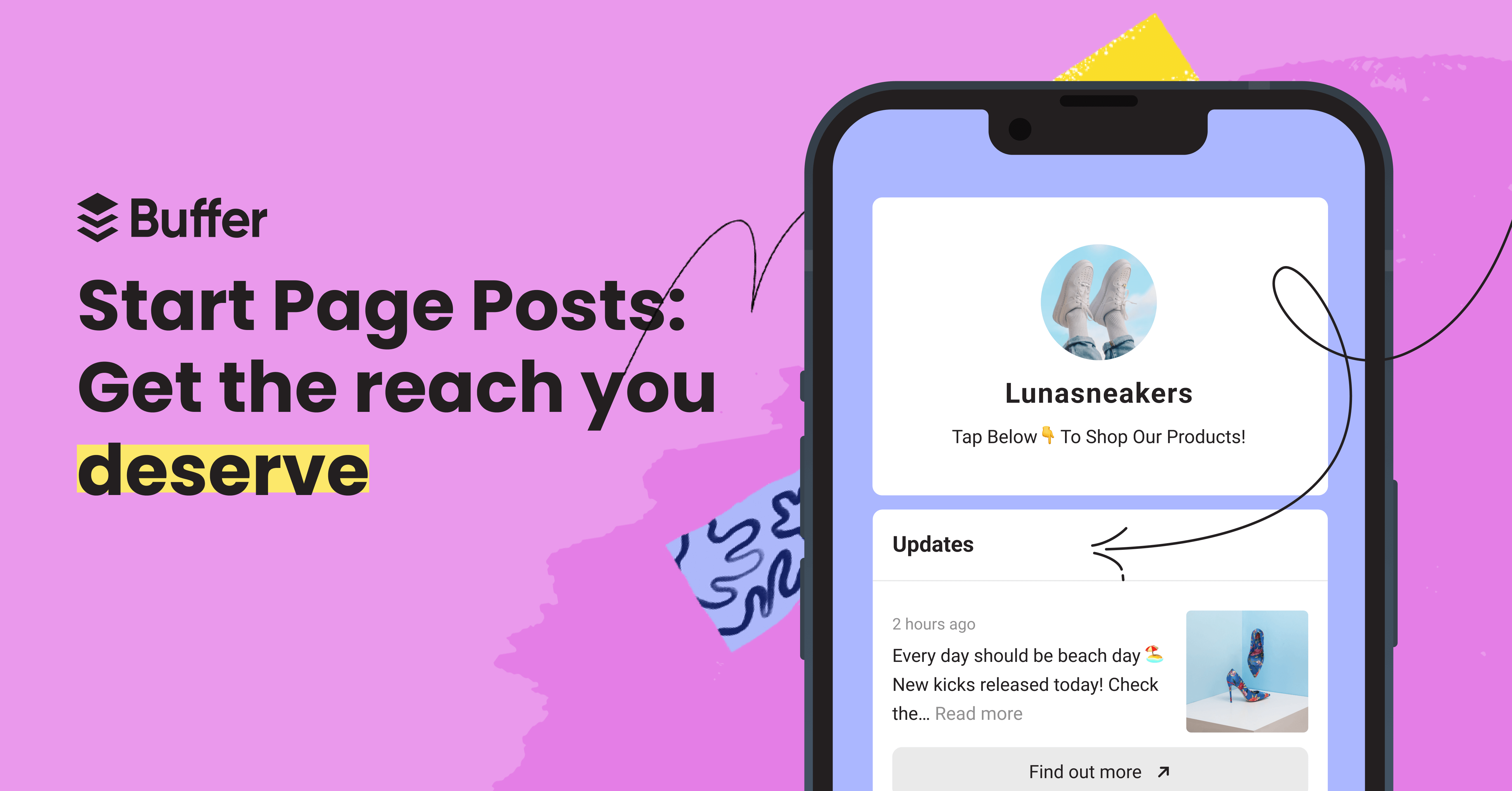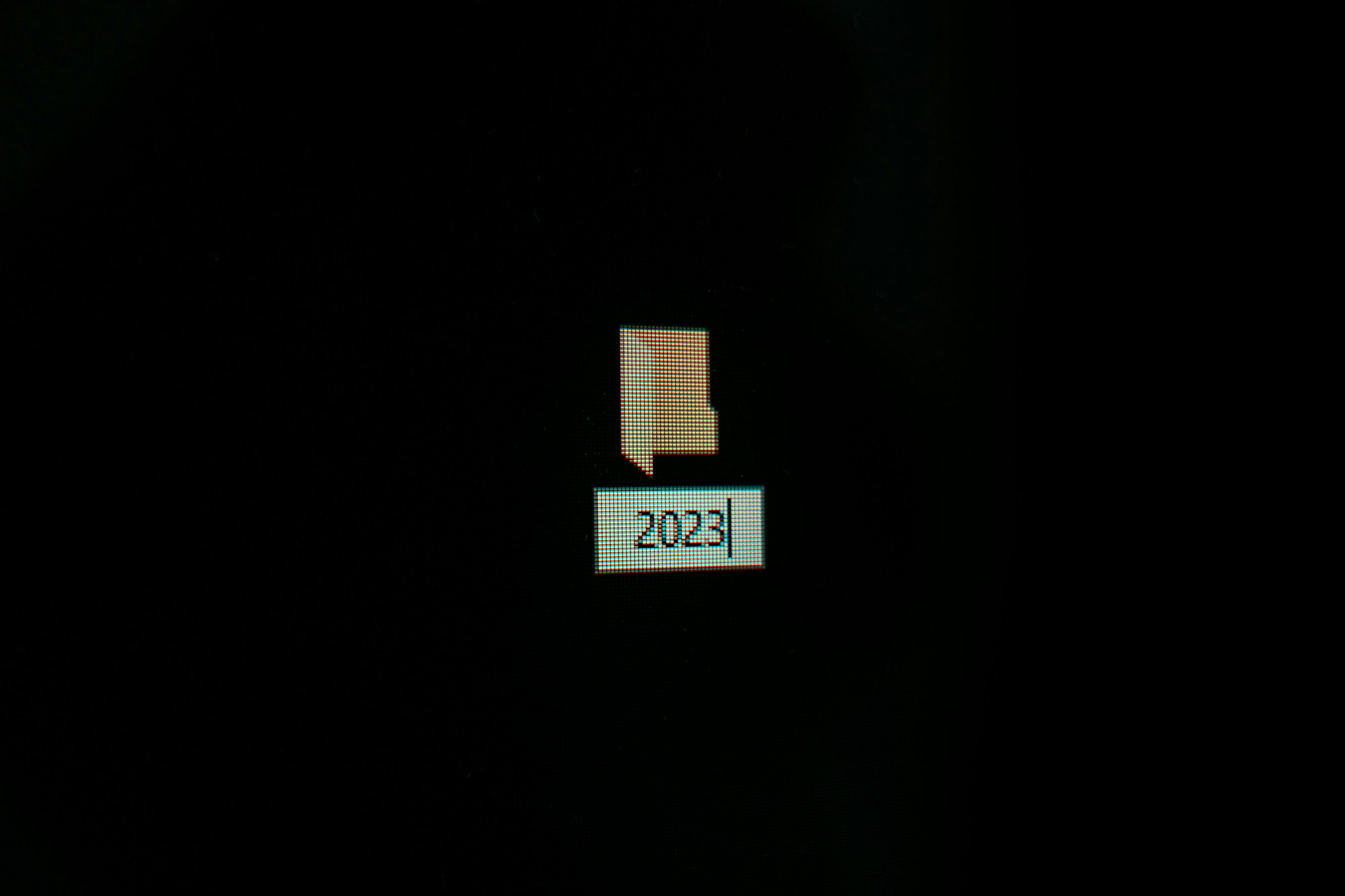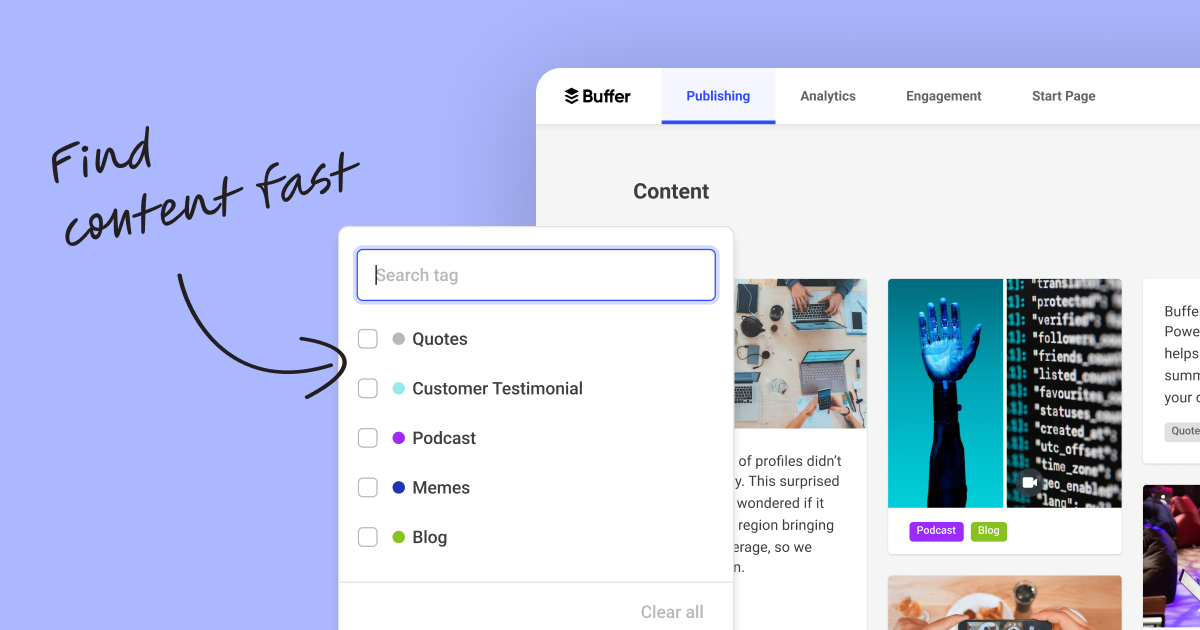
Start Page Posts: Get the Reach you Deserve
We’ve built something that could boost your reach by up to 40% Tweets containing a link get less reach, engagement, and retweets. To get the reach you deserve we’ve built Start Page scheduling.
Senior Product Marketer @ Buffer
Here’s a question that puzzles most social media users …
Why do some of my posts get more views than others?
It’s a difficult question to answer.
Each social network has a different algorithm. Each algorithm promotes and demotes posts in their own unique way.
Learning why some posts go viral while others don’t is nigh on impossible.
However, there was one thing I noticed with my posts.
It seemed that posts with links got less engagement and fewer views.
This was just an anecdotal feeling, nothing more than that. So, to test my hunch, I spent a few months researching.
Do posts containing a link perform worse?
I conducted a mix of third-party and first party research. All my third-party analysis is based on some great research conducted by others (which I’ve linked to below).
The first party analysis was conducted using Brandwatch, a consumer intelligence platform—thank you to Brandwatch for helping us out here.
So, do posts containing a link perform worse? Here’s what we found:
- Tweets with a link achieve 7.2% fewer retweets (Buffer’s own analysis)
- Tweets with a link garner 28.76% less reach (Buffer’s own analysis)
- LinkedIn impressions decrease by 3x when posting a link (AgoraPulse)
- Engagement rate for LinkedIn posts without a link is 70% higher (SocialInsider)
- Plus, Instagram and TikTok actively discourage link sharing
We couldn’t find any conclusive findings on Facebook or Google Business Profiles, but we’d assume those algorithm’s act in a similar way. So the headline seems clear, posts on social media containing a link seem to perform worse.
To dig a little deeper, let’s dive into our analysis.
We analyzed 174 million tweets with and without links
Thanks to our friends over at Brandwatch, we were able to analyze a huge number of tweets (174,525,132 tweets to be exact).
Specifically we looked for a statistically accurate sample of tweets published between July 15th, 2022 to August 16th, 2022 that either contained a link, or contained the phrase “link in bio.”
We decided to compare two styles of tweets:
- Tweets that contained a link
- Tweets containing the phrase “link in bio”
Both of these tweets are attempting to achieve the same thing. They’re both trying to drive people to external content. Except, link-based tweets do so directly in the tweet while, link in bio posts encourage people to click on the bio and access the content that way.

We compared the average number of retweets, the number of impressions and the average reach for both types of tweets. Please note, impressions refers to the sum of all followers of the authors who tweeted or retweeted the post, while reach is a number assigned to the tweet which attempts to estimate how many users actually saw the post.
Here are the results.
Tweets that refer to a “link in bio” generate:
- 8.98% more retweets than tweets that include a link
- 21.24% more impressions than tweets that include a link
- 40.38% more reach than tweets that include a link
Why is this?
Well one hypothesis is that Twitter, and other social networks, simply don’t want users to leave the app. So they limit the amount of visibility link-based tweets get.
However, posts that refer to a link in bio seem to circumvents this limitation. Without an actual link in the text, the post achieves maximum visibility and gets more retweets because of it.
How to use a link in bio
To achieve maximum visibility for your posts on social networks, you’ll want to avoid using links and instead direct your audience to your link in bio.
Which begs the question. Which tool should you use?
You’ll need a tool that’s customizable to fit your brand. One that’s able to store lots of content and links to direct your audience to the right location.
But there are lots of tools that just this (including Buffer’s own—Start Page).
However, there’s one thing unique to Start Page that sets it apart.
As of today, Start Page users can schedule new posts to appear on their page at a specific time and date—all for free.
Find out more on our announcement blog here.
Try Buffer for free
140,000+ small businesses like yours use Buffer to build their brand on social media every month
Get started nowRelated Articles

Pinterest is such a great platform for finding inspiration or researching brands and products.. With more than 498 million users and over 1.5 billion Pins saved every week, there’s always something new to cook, craft, buy, read, or be inspired by on the social network for visual content. For businesses or individuals looking to build or grow a presence on Pinterest, consistently posting valuable and interesting Pins is a great Pinterest marketing strategy to help people discover and share your

In total 26 new features were added to Buffer in 2023. Here are some of the things you may have missed—plus a look at what's to come in 2024.

Organize all of your ideas in one place with Buffer's new tagging feature. Manage your creative output. Track the success of different types of content. And build a searchable library of content.